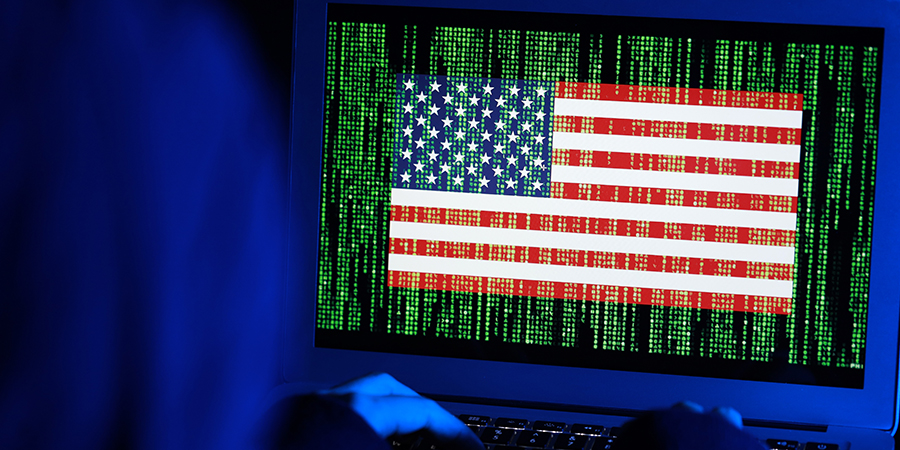With cyberattacks on the rise, 2023 is predicted to be a year focused on bracing for the impact of a cyber-storm. In response to a rapidly evolving world that demands a more intentional and better-resourced approach to cyber defense, the White House released its National Cybersecurity Strategy in March 2023.
This strategy sets out five pillars toward securing the promise of a digital future. It fundamentally recognizes that cyberspace is a tool to pursue the nation’s ambitions. “We need to be able to trust that the underlying digital ecosystem is safe, reliable and secure,” said President Joe Biden.
Risk experts surveyed by World Economic Forum find out that cybercrime and cyber insecurity were seen as the 8th biggest risk in terms of severity of impact, across both the short term (next two years) and the coming decade.
Thus, the online world, powered by digital connectivity, must be maximized and protected in the long run. Being in a solid position to ensure effective cybersecurity practices are implemented in place is crucial to the country’s critical infrastructure.
Digital technologies are a vital aspect of everyone’s life, whether for personal, professional or national interests. Laying this strategy as a foundation, it is important to know and understand the strategic objectives aligned to defend, disrupt, shape, invest and pursue a globally interconnected landscape.
Defend Critical Infrastructure
Primarily, critical infrastructure owners and operators (technology-centered) must invest in proactive measures to mitigate the effects of cyber incidents.
As stated in the official document, regulations should be performance-based, leveraging existing cybersecurity frameworks. These include the Cybersecurity and Infrastructure Security Agency (CISA)’s Cybersecurity Performance Goals (CPGs) and the National Institute of Standards and Technology (NIST) Framework for Improving Critical Infrastructure Cybersecurity.
CISA’s updated CPGs are aligned to NIST’s Identify, Protect, Detect, Respond, and Recover framework that provides guidance to organizations to better understand, manage, reduce, and communicate cybersecurity risks.
In this part, identifying gaps to drive better cybersecurity practices in the cloud computing industry was mentioned.
Moreover, scaling public-private collaboration will create a trust-based network of networks that builds awareness and drives action to protect the critical infrastructure further.
Disrupt and Dismantle Threat Actors
In this pillar, the federal government is earnest in its goal of making malicious actors incapable of carrying out cyber campaigns that will threaten the national security or public safety of the United States.
Disruption campaigns will be sustained, while investigations enable the appropriate issuance of cybersecurity advisories, private-sector actions, sanctions, diplomatic actions and intelligence operations, among other efforts.
As an example of a successful internationally coordinated action, the strategy cited the 2021 takedown of the Emotet botnet, known as one of the world’s most dangerous malware. Hence, the national cybersecurity strategy aims to “sustain and expand” collaborative disruption operations on a continuous basis. Given ransomware’s impact on key critical infrastructure services as well, the Counter-Ransom Initiative (CRI) has been convened with thirty other countries participating. They strongly discourage the payment of any ransoms to beat the purpose of this attack: making profits.
Additionally, to disrupt and dismantle adversaries in a quick manner, the federal government will “increase the speed and scale of cyber threat intelligence sharing to proactively warn cyber defenders and notify victims.”
Biden’s administration will prioritize the adoption of a cybersecurity risk-based approach to IaaS providers that address indicators of malicious activity.
Shape Market Forces for Security and Resilience
According to Statista, in 2021, the digital economy added $US 2.4 trillion to the overall US economy. In line with this, the strategy works to have the modern digital economy promote practices that enhance security and resilience while preserving innovation and competition.
Securing personal data is the first strategic objective, and this involves providing privacy requirements that evolve with emerging threats. IoT cybersecurity will continue to be improved, alongside advancing IoT security labeling programs.
Software companies will also be held liable to produce safer products and services. This legislation will incorporate new tools for secure software development, transparency and vulnerability discovery.
Other strategic objectives include using federal grants to build security and leveraging federal procurement to improve accountability.
Invest in a Resilient Future
The government must leverage strategic public investments in innovation, R&D and education to build a new generation of digital infrastructure consisting of telecom, IoT, AI and quantum computing, to name some. Departments and agencies will direct R&D projects in these areas to advance cybersecurity and resilience.
Securing the technical foundation of the internet, steps will be taken to address Border Gateway Protocol vulnerabilities, unencrypted DNS requests and slow adoption of IPv6. The US, together with its foreign and private sector partners, will implement a multi-pronged strategy, while simultaneously supporting non-governmental SDOs to secure emerging technologies, enable interoperability and protect national security and economic advantage.
Enhanced digital identity solutions and infrastructure is also one of the strategic objectives of this pillar, building on the NIST-led digital identity research program authorized in the CHIPS and Science Act.
Expanding the national cyber workforce is also essential. There must be diversity and opportunities to train the next generation of cybersecurity talents.
Forge International Partnerships
The last pillar reiterates the importance of collaboration in achieving a reliable and secure cyberspace. The government will expand coalitions, build the capacity of international allies, reinforce the applicability of existing laws and punish those who will engage in destructive cyber activities.
The government will continue to leverage partnerships to enable effective operational collaboration in defending a shared digital ecosystem. These include the Declaration for the Future of the Internet (DFI), the Indo-Pacific Economic Framework for Prosperity (IPEF), the US-EU Trade and Technology Council (TTC) and AUKUS, a trilateral security and technology pact between the US, UK and Australia.
In this pillar, securing the global supply chains for ICT is a strategic objective. The government is working with partners to secure 5G and diversify suppliers, and will prevent risks from ICT services being influenced by adversarial governments.
Overall, the national cybersecurity strategy is an expansive effort to protect the nation’s digital environment and assets, for the purpose of a prosperous and more advanced society.


































